26th August, 2025
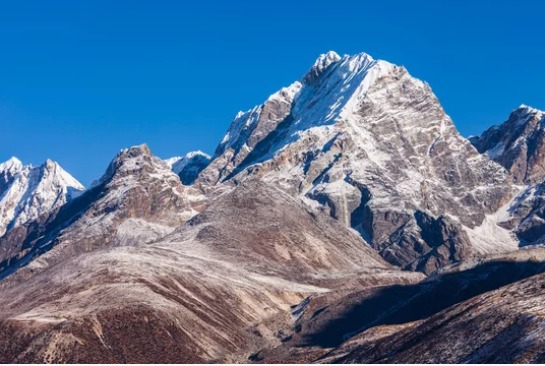
Jul 06, 2024
Lobuche Peak Climbing In August
- Introduction
- Overview of Lobuche Peak Climbing
- Weather and Climatic Conditions in August
- Preparing for Lobuche Peak Climbing
- Physical Fitness and Training
- Essential Gear and Equipment
- Permits and Regulations
- Getting to Lobuche Base Camp
- Climbing Route and Highlights
- Technical Challenges and Safety Tips
- Acclimatization and Altitude Considerations
- Accommodation and Facilities
- Cultural and Natural Highlights
- Summit Day Experience
- Side Trips and Optional Extensions
- Hiring a Guide or Climbing Solo
- Budgeting and Costs
- Responsible Climbing Practices
- Tips and Recommendations for Climbing Lobuche Peak
- Conclusion and Reflections
Climbing Lobuche Peak in August presents both challenges and unique opportunities for adventurous mountaineers. Standing at 6,119 meters (20,075 feet), Lobuche Peak is a popular trekking peak in the Everest region of Nepal, offering stunning views of Himalayan giants like Everest, Lhotse, Nuptse, and others. Here’s what climbers can expect when tackling Lobuche Peak in August:
August marks the tail end of the monsoon season in Nepal, characterized by variable weather patterns. Climbers can expect occasional rainfall, cloudy skies, and higher humidity levels during this time. The monsoon brings lush greenery to the landscape but also increases the risk of landslides and slippery trails. Cloud cover can obscure mountain views, impacting the overall experience. It's essential to monitor weather forecasts closely and be prepared for sudden weather changes typical of the monsoon season.
Preparation for climbing Lobuche Peak in August requires careful consideration of weather conditions and necessary gear:
Gear Preparation: Ensure all climbing gear is waterproof and suitable for wet conditions. This includes rainproof jackets, pants, and gaiters to protect against rain and mud.
Physical Fitness: Focus on cardiovascular endurance and strength training to cope with the demands of high-altitude trekking and climbing.
Acclimatization: Plan a gradual ascent to allow your body to adjust to higher altitudes and mitigate the risk of altitude sickness.
The standard route for climbing Lobuche Peak begins from Lobuche Base Camp, following a challenging trail through moraines, glaciers, and steep ascents. Climbers often establish high camps to facilitate an early morning summit push. Highlights of the climb include crossing crevasses, navigating ice slopes, and utilizing fixed ropes in technical sections. The summit offers breathtaking panoramic views of the surrounding Himalayan peaks, making the effort and challenges worthwhile.
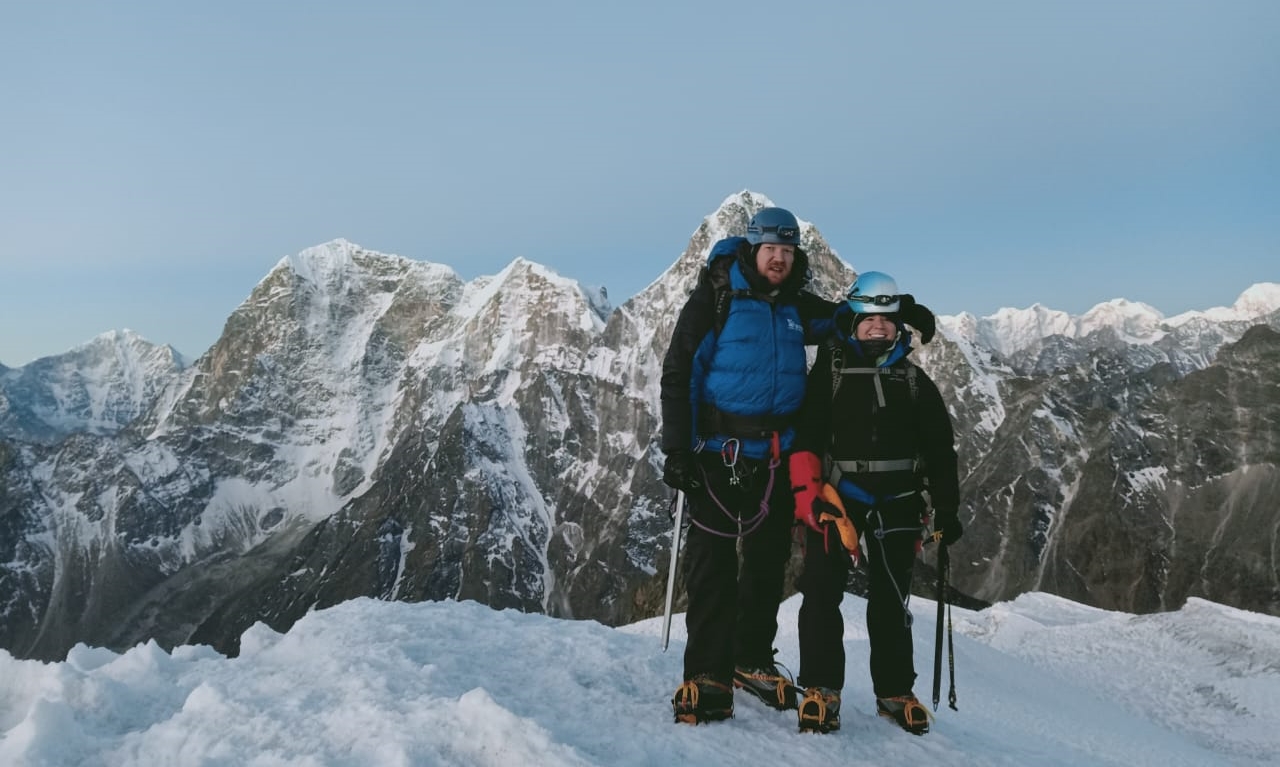
LOBUCHE PEAK CLIMBING
Lobuche East (6,119m/20,075ft), set in Nepal's stunning Khumbu on the Nepalese side of Everest.The best time to go trekking in Nepal is in Autumn (September-November) and in...
Climbing Lobuche Peak in August presents several challenges:
Weather Dependency: Unpredictable weather can impact visibility and trail conditions, requiring flexibility in climbing plans.
Trail Conditions: Rainfall can make trails muddy and slippery, necessitating cautious trekking and climbing techniques.
Altitude and Acclimatization: Proper acclimatization is crucial to prevent altitude-related illnesses such as AMS (Acute Mountain Sickness). Plan rest days and hydrate adequately throughout the climb.
Safety Concerns: Be mindful of potential hazards such as rockfalls and avalanches, especially in the wake of monsoon rains.
Beyond the physical challenges, climbing Lobuche Peak in August offers cultural immersion with visits to Sherpa villages and Buddhist monasteries along the trekking route. Despite the weather challenges, August provides a quieter trekking experience with fewer tourists, allowing for a more intimate connection with the serene Himalayan landscape.
Climbing Lobuche Peak in August is a test of endurance, skill, and resilience against the backdrop of Nepal's monsoon season. While weather conditions pose challenges, the experience of standing atop Lobuche Peak and witnessing the majesty of the Himalayas remains a cherished accomplishment for adventurous climbers. Proper preparation, respect for local customs, and a spirit of adventure are key to making the most of this unforgettable trekking peak in the Everest region.

LOBUCHE PEAK SUMMIT RETURN BY HELICOPTER
A real climbing adventure that will leave you stunned at the beauty of the Himalayan Mountains. The Lobuche Peak Climbing expedition in the spectacular Khumbu region of Nepal has been ranked by Lonely...
Introduction
Climbing Lobuche Peak in the Everest region of Nepal is a thrilling endeavor that combines adventure with breathtaking Himalayan vistas. Standing at 6,119 meters (20,075 feet), Lobuche Peak offers climbers the opportunity to experience high-altitude mountaineering in one of the world's most renowned trekking destinations. The journey to Lobuche Peak takes climbers through picturesque Sherpa villages, rugged terrain, and dramatic glacial landscapes, culminating in a challenging ascent to the summit with panoramic views of Everest, Lhotse, and Nuptse.
Overview of Lobuche Peak Climbing
Lobuche Peak is categorized as a trekking peak, accessible to climbers with basic mountaineering skills and experience. The climb typically begins from Lobuche Base Camp, following a well-established route through the Khumbu Valley. Climbers ascend gradually, passing through moraines and rocky terrain before reaching high camps for acclimatization. The final push to the summit involves navigating steep slopes, snow and ice sections, and fixed ropes in technical areas. The ascent offers an exhilarating mix of adventure and natural beauty, making it a popular choice for mountaineers seeking to summit a Himalayan peak.
Weather and Climatic Conditions in August
August marks the tail end of the monsoon season in Nepal, bringing variable weather conditions to the Everest region. Climbers can expect sporadic rainfall, cloudy skies, and increased humidity during this time. The monsoon rains rejuvenate the landscape with lush greenery but also pose challenges such as slippery trails and potential landslides. Cloud cover may obscure mountain views, affecting the overall climbing experience. It is essential for climbers to monitor weather forecasts closely and be prepared for sudden weather changes typical of the monsoon season.
Preparing for Lobuche Peak Climbing
Successful preparation for climbing Lobuche Peak in August involves meticulous planning and readiness for the challenges presented by the monsoon season:
- Gear Preparation: Ensure all equipment is waterproof and suitable for wet conditions. This includes rainproof jackets, pants, and gaiters to protect against rain and mud.
- Physical Fitness: Focus on cardiovascular endurance and strength training to cope with the demands of high-altitude trekking and climbing.
- Acclimatization: Plan a gradual ascent with sufficient rest days to allow your body to acclimate to higher altitudes and minimize the risk of altitude sickness.
- Route Familiarization: Study the climbing route, including technical sections and high camps, to understand the terrain and prepare mentally for the challenges ahead.

LOBUCHE PEAK EXPEDITION 14 DAYS
The Lobuche Peak Expedition is a 14-day trekking adventure that takes you to the heart of the Khumbu region in Nepal. It is a popular trekking peak in the Himalayas, with stunning views of the surroun...
Physical Fitness and Training
Physical fitness is paramount for tackling the demands of climbing Lobuche Peak. Endurance training through activities such as hiking, running, and cycling builds cardiovascular stamina essential for sustained effort at high altitudes. Strength training focuses on developing core strength, leg muscles, and upper body strength to navigate rocky terrain and use climbing equipment effectively. Flexibility exercises enhance mobility and reduce the risk of injuries during the climb. Training should be tailored to simulate conditions encountered during the ascent, including steep inclines, uneven surfaces, and changing weather conditions typical of the Himalayan environment. Maintaining a balanced diet and adequate hydration are equally important for supporting physical performance and recovery throughout the climb.
Essential Gear and Equipment
Climbing Lobuche Peak requires specialized gear and equipment to ensure safety and comfort throughout the ascent:
- Clothing: Layered clothing suitable for varying weather conditions, including base layers, insulated jackets, waterproof outer shells, and thermal underwear.
- Footwear: Sturdy trekking boots with good ankle support and crampon-compatible mountaineering boots for icy conditions.
- Climbing Gear: Helmet, harness, crampons, ice axe, ropes, and carabiners for navigating technical sections and ensuring safety.
- Sleeping Gear: High-quality sleeping bag rated for sub-zero temperatures and a sleeping mat for insulation from the ground.
- Miscellaneous Items: Headlamp with spare batteries, sunglasses with UV protection, sunscreen, lip balm, trekking poles, and a first aid kit.
Permits and Regulations
To climb Lobuche Peak, climbers need to obtain permits from the Nepalese government through a registered trekking agency or guide. The required permits typically include the Sagarmatha National Park entry permit and the climbing permit for Lobuche Peak. It's essential to carry these permits throughout the trek and present them at checkpoints when required. Regulations also include respecting local customs and environmental conservation efforts, such as adhering to Leave No Trace principles and properly disposing of waste.
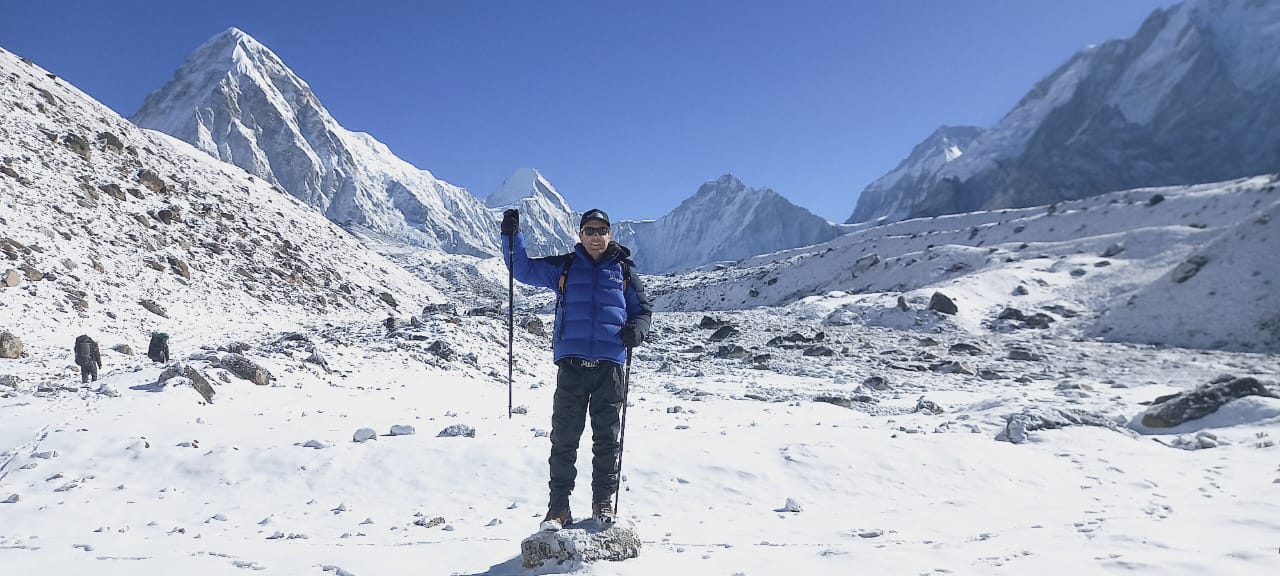
ISLAND AND LOBUCHE PEAK CLIMBING
Lobuche and Island Peak combo climbing expedition is a thrilling adventure that offers a unique opportunity to conquer two popular peaks in the Everest region of Nepal. Lobuche Peak (6,119m) and Islan...
Getting to Lobuche Base Camp
Lobuche Base Camp serves as the starting point for climbers attempting Lobuche Peak. The journey typically begins with a flight from Kathmandu to Lukla, followed by trekking through the picturesque Khumbu Valley. The trek passes through villages like Namche Bazaar, Tengboche, Dingboche, and eventually reaches Lobuche Base Camp. Alternatively, some climbers opt for a helicopter charter directly to Pheriche or Dingboche for quicker access to the Khumbu region. Trekking to Lobuche Base Camp allows for gradual acclimatization and immersion in the Himalayan landscape before attempting the ascent.
Climbing Route and Highlights
The climbing route to Lobuche Peak typically involves setting up intermediate camps for acclimatization and summit attempts. From Lobuche Base Camp, climbers ascend through rocky terrain, moraines, and glacier sections towards High Camp. The final summit push involves navigating steep slopes, snowfields, and possibly fixed ropes in technical areas. Highlights of the climb include panoramic views of Everest, Lhotse, Nuptse, and surrounding peaks from the summit, offering a rewarding culmination of the climbing effort.
Technical Challenges and Safety Tips
Climbing Lobuche Peak presents several technical challenges and requires adherence to safety protocols:
- Altitude: The altitude of 6,119 meters (20,075 feet) poses risks of altitude sickness, requiring careful acclimatization and monitoring of symptoms.
- Glacial Terrain: Crossing crevasses and navigating icy terrain necessitates proficiency in using crampons, ice axes, and ropes.
- Weather Conditions: Unpredictable weather, including snowstorms and high winds, can impact climbing conditions. Monitoring weather forecasts and adjusting plans accordingly is crucial.
- Safety Measures: Climbers should travel in teams, carry necessary communication devices, and be prepared for emergency situations such as avalanches or medical emergencies. Following the guidance of experienced guides and maintaining situational awareness are essential for a safe and successful climb of Lobuche Peak.
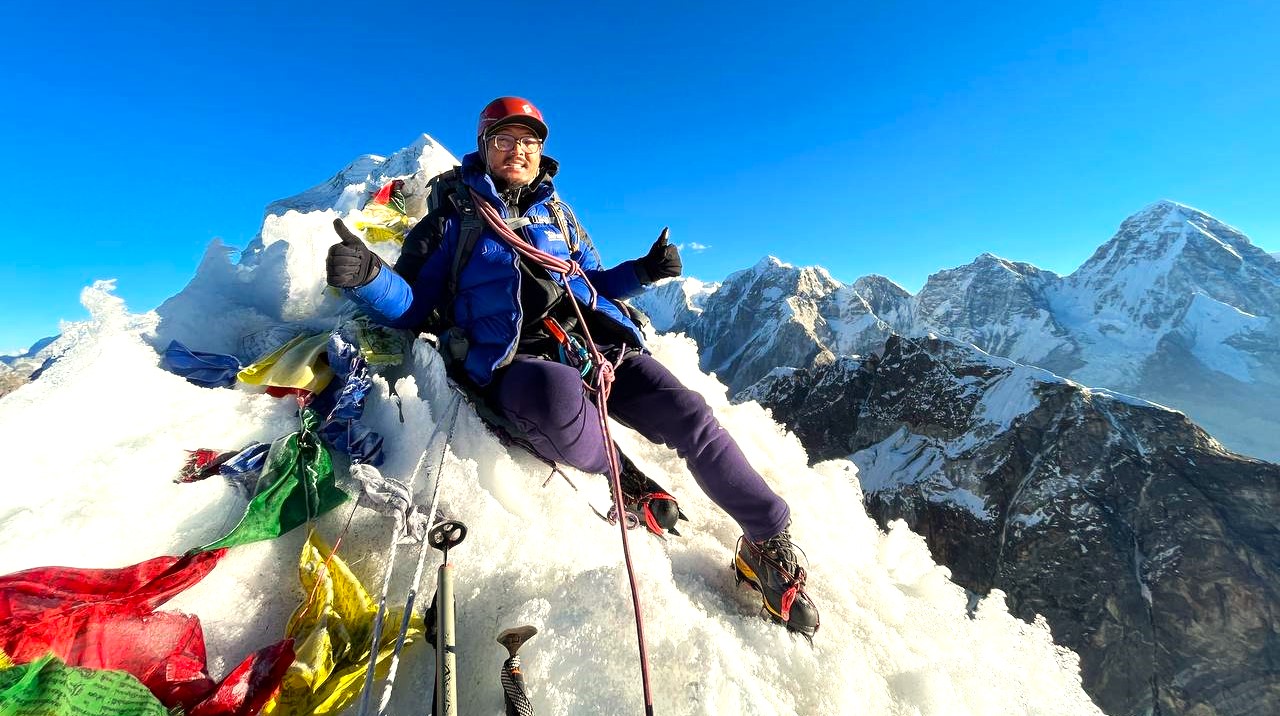
LOBUCHE PEAK EXPEDITION 15 DAYS
Lobuche Peak Expedition is a thrilling adventure that takes you to the heart of the Khumbu region in Nepal. The peak stands at an altitude of 6,119 meters and offers stunning views of the surrounding...
Acclimatization and Altitude Considerations
Acclimatization is crucial when climbing Lobuche Peak due to its high altitude of 6,119 meters (20,075 feet). Proper acclimatization helps climbers adjust to reduced oxygen levels and minimizes the risk of altitude sickness. The ascent typically includes gradual gains in elevation with scheduled rest days to allow the body to adapt. Climbers ascend to higher camps such as Lobuche Base Camp and High Camp, spending nights to acclimatize before attempting the summit. Hydration, adequate rest, and a slow ascent rate are key strategies for acclimatization success. Monitoring personal health and recognizing symptoms of altitude sickness, such as headaches, nausea, and fatigue, are essential for safety.
Accommodation and Facilities
Accommodation options during Lobuche Peak climbing expeditions range from basic teahouses to tented camps at higher altitudes:
- Teahouses: Along the trekking route to Lobuche Base Camp and surrounding villages like Dingboche and Gorakshep, teahouses offer basic lodging with shared rooms, meals, and communal areas.
- Tented Camps: Higher up towards Lobuche Base Camp and High Camp, climbers may stay in tented camps with more basic facilities, including sleeping tents and dining tents. These camps provide necessary shelter and amenities amidst the mountainous terrain.
Facilities vary with altitude, becoming more limited as climbers ascend higher. Teahouses and camps typically offer meals such as dal bhat (rice and lentils), noodles, and hot beverages. Accommodation and facilities should be booked in advance during peak climbing seasons to ensure availability.
Cultural and Natural Highlights
The trek to Lobuche Peak offers encounters with both cultural heritage and natural wonders:
- Sherpa Culture: Interactions with Sherpa communities along the trail provide insights into local customs, traditions, and daily life. Visits to monasteries in Tengboche and Pangboche offer opportunities to learn about Buddhist practices and rituals.
- Natural Beauty: The trek passes through diverse landscapes, including rhododendron forests, glacial moraines, and alpine meadows. Scenic viewpoints like Kala Patthar offer panoramic vistas of Everest, Lhotse, and other Himalayan peaks, showcasing the region's natural splendor.
Summit Day Experience
Summit day on Lobuche Peak involves an early morning start from High Camp, typically around midnight, to ensure climbers reach the summit and descend before adverse weather conditions set in. The ascent to the summit involves navigating steep slopes, rocky sections, and possibly fixed ropes in technical areas. Climbers use headlamps to navigate in the dark and proceed at a steady pace to conserve energy. Upon reaching the summit, climbers are rewarded with awe-inspiring views of the Himalayan range, including Everest and neighboring peaks. After celebrating their achievement and capturing photographs, climbers descend back to High Camp for rest and further descent the following day.

ISLAND PEAK CLIMBING
Sherpa Expedition & Trekking (Est.1977) are pleased to announce FOR ADVENTURERS the most awesome, exhilarating & unforgettable climbing and treks on offer anywhere today!...
Side Trips and Optional Extensions
Several side trips and extensions enhance the Lobuche Peak climbing experience:
- Everest Base Camp: Many climbers combine Lobuche Peak climbing with a visit to Everest Base Camp (EBC). The trek to EBC from Lobuche Base Camp offers a closer view of Everest's base and allows climbers to experience the iconic location.
- Gokyo Lakes: Another option is to trek to the pristine Gokyo Lakes, renowned for their turquoise waters and surrounding Himalayan vistas. Climbing Gokyo Ri provides panoramic views of Everest and Cho Oyu.
- Island Peak: For climbers seeking additional challenges, ascending nearby Island Peak (Imja Tse) offers a technical climb with stunning views of the Everest region.
These side trips add diversity to the trekking experience and allow climbers to explore more of the Everest region's natural and cultural attractions. Each extension typically requires additional trekking days and permits, enhancing the overall adventure of climbing Lobuche Peak.
Hiring a Guide or Climbing Solo
Deciding whether to hire a guide or climb Lobuche Peak solo depends on several factors, including experience, comfort level with navigation and technical climbing, and personal preference for safety and companionship. Hiring a local guide offers several advantages:
- Local Expertise: Guides are familiar with the terrain, weather patterns, and best routes for climbing Lobuche Peak. They provide valuable insights into local culture, flora, and fauna.
- Safety: Guides are trained in first aid, rescue procedures, and managing emergencies at high altitude. They can assess and mitigate risks during the climb.
- Logistical Support: Guides arrange permits, accommodations, and meals, allowing climbers to focus on the climb itself without logistical concerns.
- Companionship: Climbing with a guide provides companionship and support, particularly during challenging sections or adverse weather conditions.
Climbing solo requires strong navigation skills, experience in high-altitude climbing, and thorough preparation. Solo climbers must manage all logistics independently, including permits, gear, and emergency plans.

ISLAND PEAK CLIMBING
Sherpa Expedition & Trekking (Est.1977) are pleased to announce FOR ADVENTURERS the most awesome, exhilarating & unforgettable climbing and treks on offer anywhere today!...
Budgeting and Costs
Budgeting for climbing Lobuche Peak includes several key expenses:
- Permits: Climbing permits for Lobuche Peak and national park entry fees.
- Guide Fees: If hiring a guide, fees typically include their services, accommodation, meals, and insurance.
- Gear Rental: Costs for renting or purchasing climbing equipment and gear, including clothing, crampons, ice axes, and ropes.
- Transportation: Flights or ground transportation to and from Kathmandu and Lukla, as well as trekking permits for the Khumbu region.
- Accommodation and Meals: Costs vary based on accommodation preferences (teahouses or tented camps) and meals along the trekking route.
Budgeting should also consider contingency funds for unexpected expenses, such as additional nights, medical emergencies, or weather delays.
Responsible Climbing Practices
Responsible climbing on Lobuche Peak involves adhering to environmental conservation principles and respecting local culture:
- Leave No Trace: Pack out all waste, including biodegradable items. Minimize impact on the natural environment by staying on designated trails and avoiding wildlife disturbance.
- Respect Cultural Sites: Observe and respect local customs, traditions, and religious sites. Seek permission before photographing individuals or cultural artifacts.
- Safety Awareness: Prioritize safety by following guide instructions, using appropriate gear, and monitoring personal health and acclimatization.
Support local communities by patronizing locally owned accommodations and businesses, contributing to sustainable tourism practices.

CHULU FAR EAST PEAK CLIMBING
Are you looking for adventure, natural beauty, magnificent snow-capped peaks, and unique cultural experience?This Peak Climbing will give you all the thrills, variety, and the adrenalin rush as you cl...
Tips and Recommendations for Climbing Lobuche Peak
- Physical Fitness: Prepare with cardiovascular and strength training, focusing on endurance and stamina for high-altitude climbing.
- Acclimatization: Plan gradual ascent and rest days to acclimate to altitude, reducing the risk of altitude sickness.
- Gear Preparation: Ensure all climbing gear is in good condition and suitable for high-altitude conditions. Test equipment before departure.
- Weather Monitoring: Stay informed about weather forecasts and adjust climbing plans accordingly to optimize safety and summit success.
- Hydration and Nutrition: Maintain adequate hydration and nutrition throughout the climb to sustain energy levels and support acclimatization.
Conclusion and Reflections
Climbing Lobuche Peak offers a challenging and rewarding adventure amidst the stunning Himalayan landscape. Whether climbing solo or with a guide, the journey provides opportunities for personal growth, cultural immersion, and appreciation of natural beauty. Reflect on the experiences gained, the challenges overcome, and the friendships forged during the climb. Remember to leave a positive impact on the environment and local communities, fostering responsible and sustainable climbing practices for future generations of adventurers.
Lobuche Peak Climbing Packages
Lobuche Peak Summit Return By Helicopter
Lobuche Peak Expedition 14 Days
Lobuche Peak Expedition 15 Days
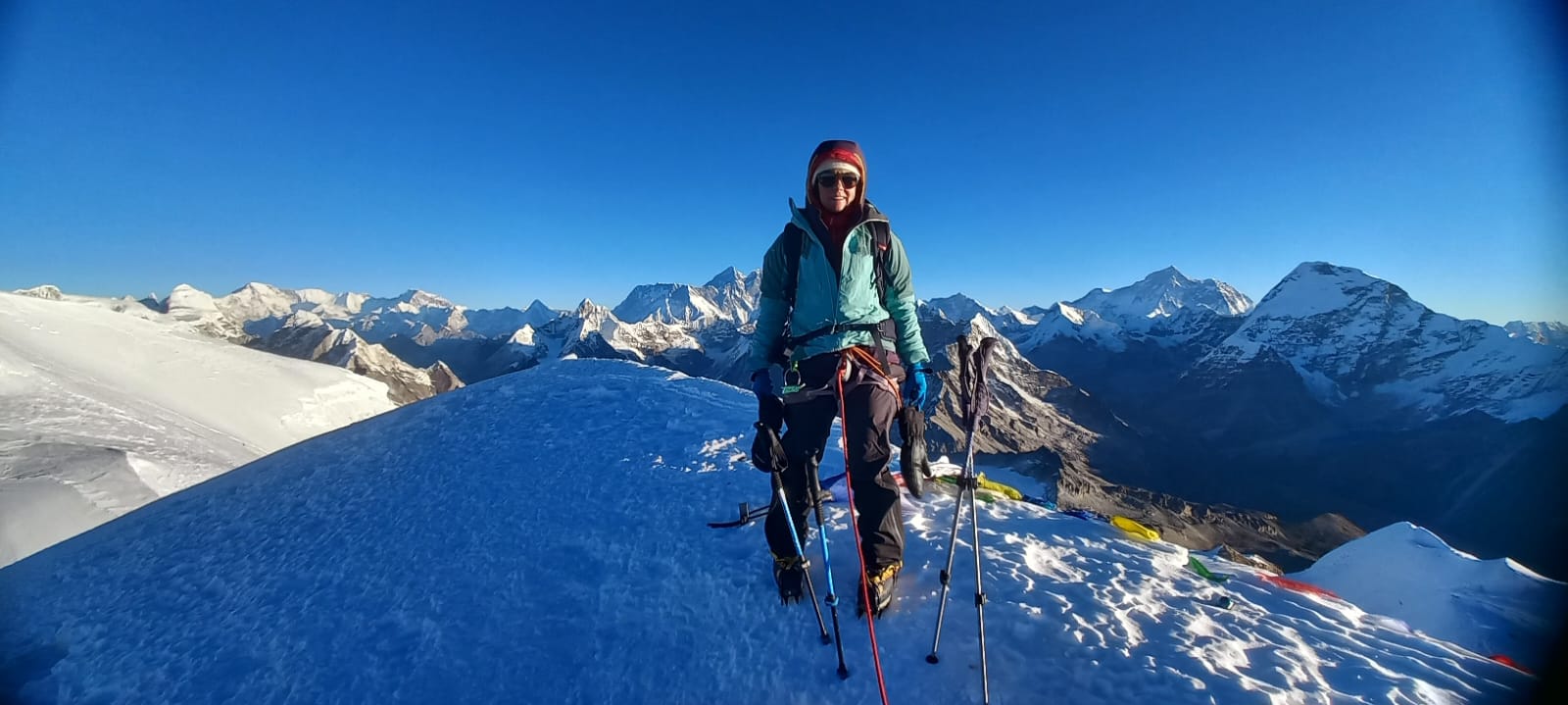
Three Peak Expedition
Embark on an unforgettable journey to the heart of the Himalayas as you conquer three majestic peaks: Mera Peak, Island Peak, and Lobuche Peak. This ultimate adventure combines technical climbing, bre...
Any Questions? Let Us Know.
Recent Posts
17th June, 2025


















